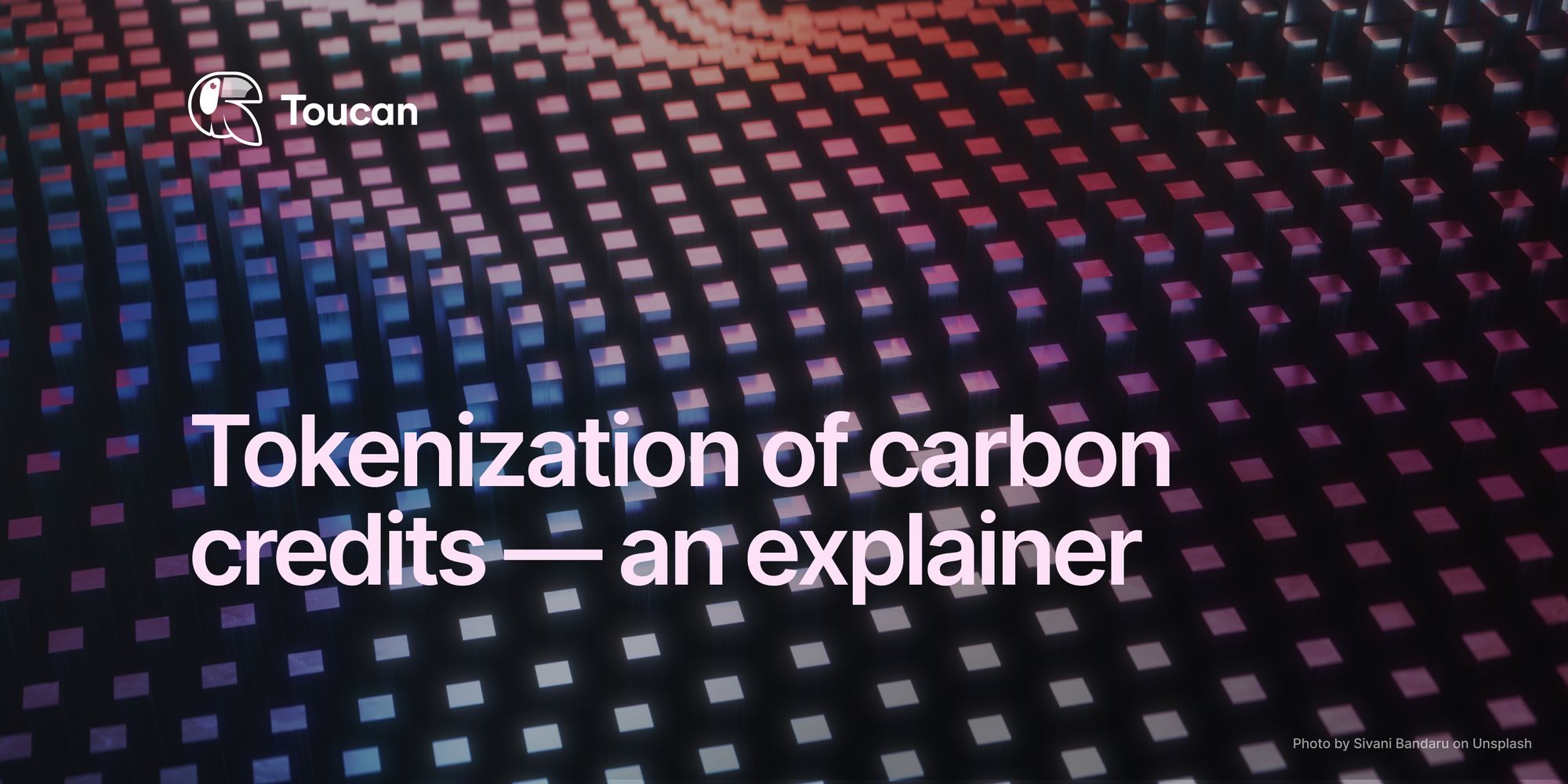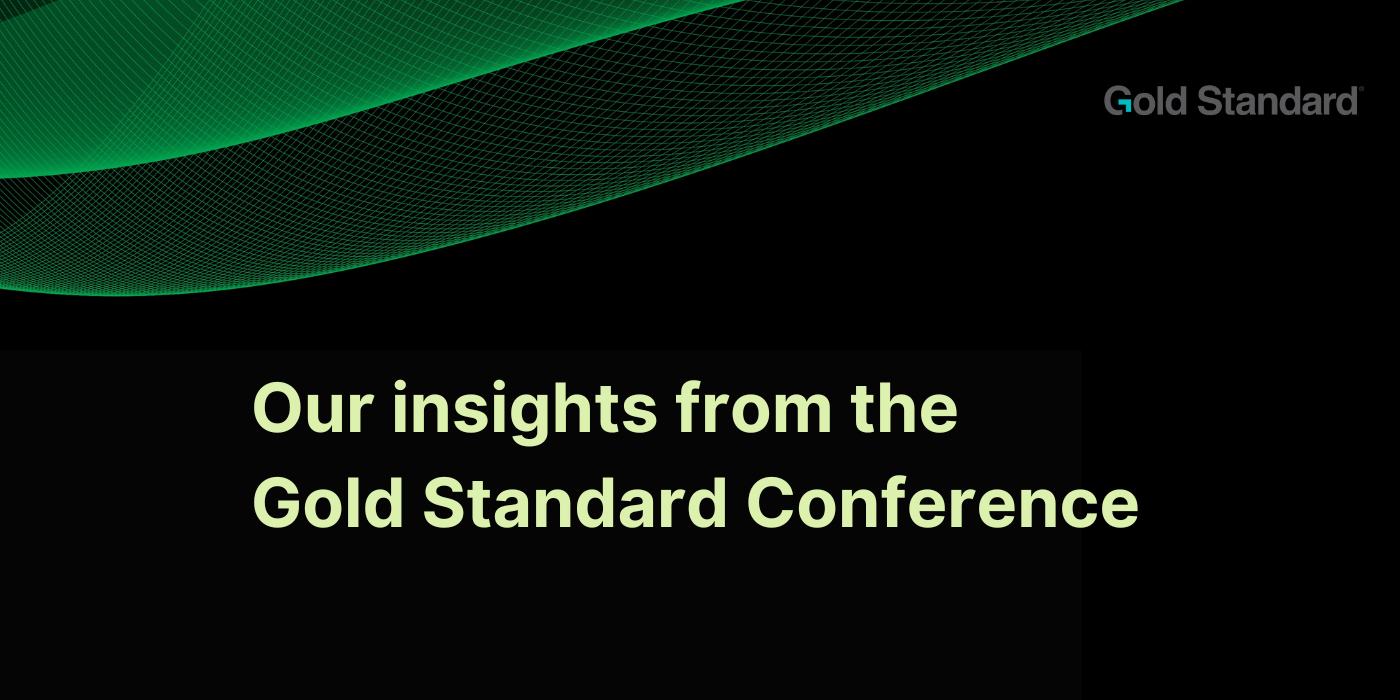Bringing blockchain to the VCM – A Gold Standard perspective
Hugh Salway, Senior Director for Market Development and Partnerships at Gold Standard, recently joined our CEO Raphael to discuss how blockchain technology and the VCM are coming together.

Carbon credit tokenization and its potential impact on the carbon market remains a hot topic. Hugh Salway, Senior Director for Market Development and Partnerships at Gold Standard, recently joined our CEO Raphael to discuss how blockchain technology and the VCM are coming together.

In this conversation, Hugh delves into Gold Standard’s decision to explore blockchain and how it could transform the carbon market. He also shares his concerns and excitement for the future.
Tokenization and its benefits
Tokenization is the process of converting real-world assets, in this case carbon credits, into digital tokens on a blockchain.
Carbon credit tokenization encourages greater participation from outside the current VCM bubble and enables retail investors and conscious individuals to offset their emissions. Tokenization also offers unique opportunities that simply didn't exist before:
- the fractionalization of carbon credits
- improving transparency
- enabling pre-financing for carbon projects that need it most

Gold Standard's roadmap for tokenization
First, Hugh shed light on Gold Standard's journey into exploring tokenization. The organization has been open to blockchain and new technologies for many years, but the explosion of the DeFi (Decentralized Finance) space and the tokenization of 20 million carbon credits on the Verra platform in 2021 brought greater attention to the opportunities and challenges in this area.
Currently, Gold Standard is working on creating a framework for digital assets on-chain. They are considering both existing models and innovative approaches to benefit the market and achieve broader environmental goals.
Navigating risks and challenges
While the potential benefits of tokenization are significant, there are also concerns. The carbon market already faces many challenges, for example, misinformation and misleading practices that result in negative consequences for investors. Additionally, the decentralized nature of blockchain technology brings both real and perceived risks, and some stakeholders are worried about potential negative outcomes.
Gold Standard's approach to tokenization involves careful consideration of risks and implementing measures to maintain the market's integrity.
A change in regulations
One of the major concerns for the carbon market's future is the impact of regulatory changes. The carbon market is growing and becoming more integral to climate mitigation efforts, and governments worldwide are exploring ways to regulate it.
Positive regulation can enhance the market's credibility, but poorly designed regulations could stifle innovation and hamper its growth. Finding the right balance is crucial to ensure a smooth transition to a regulated and mature carbon market.
Speeding up project developments
A significant challenge for the carbon market is the time-consuming and complex project certification process. This bottleneck slows down project development and the flow of funds to sustainable initiatives.
Gold Standard recognizes this issue and has been taking steps to streamline and digitize the certification process. This would expedite approvals and enable more efficient project development.
Balancing market access and accountability
The discussion also touched on the balance between market access and accountability. Opening the carbon market to a broader audience is desirable. But ensuring the responsible use of carbon credits and preventing greenwashing is equally crucial.
Certifying bodies like Gold Standard play a role in maintaining the market's integrity, but it is also essential for governments and initiatives to introduce disclosure practices and guidelines for responsible credit usage.
Conclusion
The carbon market is starting to navigate the challenges and opportunities that blockchain technology offers. But striking the right balance between regulation and innovation is crucial for creating a more equitable and effective landscape. Tokenization could revolutionize the way carbon credits are bought, sold, and utilized. And it can democratize access to carbon credits and accelerate the progress toward a more sustainable future.
We're thanking Hugh for a great conversation with valuable insights into Gold Standard's exploration into tokenization, and appreciate the organization's commitment to driving innovation while fostering accountability.


